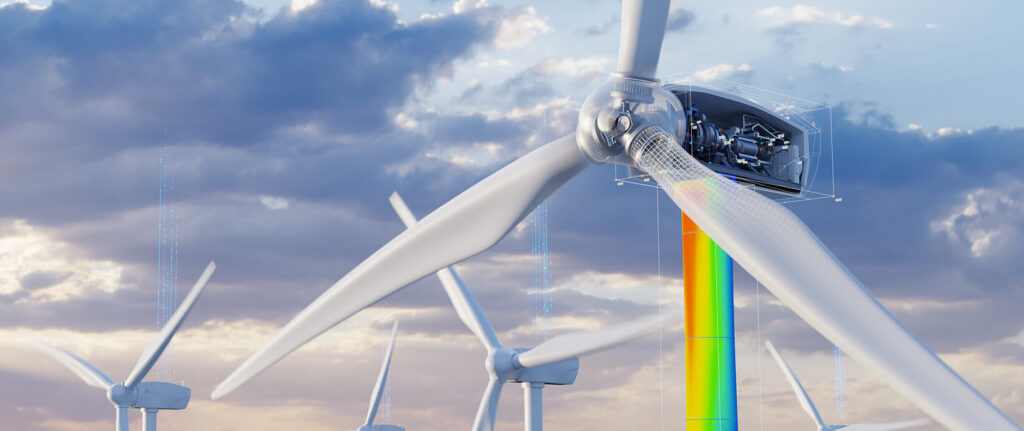A global survey conducted by Altair of more than 2,000 professionals across key industries has highlighted a surge in the uptake of digital twin technology worldwide – with two in three respondents (67%) stating that they expect digital twin technology to eradicate the need for physical prototypes in the next six years. The study also confirmed many of the expected benefits of virtual twin tech, namely more accurate and quicker product development. Respondents reported an overwhelmingly strong connection between digital twins and the drive for sustainability, with 85% of respondents stating that their organization is currently using or plans to use digital twin solutions to reach their overall sustainability goals.
“There’s little doubt data gleaned from using digital twins gives organizations a world of new insight, helping teams work faster, create better products, generate less waste, and find their next big breakthrough,” said James R Scapa, founder and chief executive officer, Altair. “But as this study confirms, we are just seeing the tip of the iceberg. The evolution toward a smart, connected everything is changing the world, and as businesses realize the untapped benefits of taking digital twins to the next level, including the convergence of simulation technology, high-performance computing and AI, the possibilities for revolutionizing industries, business processes, and scientific research are endless.”
More key findings from the survey include the following:
- Breakneck adoption rates: According to the survey, businesses are adopting digital twin technology at unprecedented speeds.
- Nearly three in four (69%) organizations are already leveraging digital twins.
- 71% of those businesses began investing in the technology in just the past year.
- Of those organizations not using digital twins, nearly half expect their company to adopt the technology within three years.
- A need for deeper digital twin understanding is widespread: More than half of respondents stated they have limited knowledge about the technology or find it confusing. Many users (more than one-third) signaled they’d like to learn more about use cases, data optimization, convergence and other aspects of digital twin technology.
- Sustainability breakthroughs: The survey found digital twins are simulating the way to a net zero future, as 92% of respondents indicated the technology has improved sustainability within their organization. Organizations use digital twin technology for a wide range of functions and reasons, with top use cases including:
- 95% to better inform new product development.
- 51% to create smart objects.
- 50% to monitor real-world objects in real-time.
- Game-changing impact: Respondents reported where they see the greatest impacts of digital twin technology:
- More accurate risk assessments, faster time to market, and improved customer satisfaction (73%).
- Reduced maintenance and warranty costs (62%).
- Nearly three in four respondents (73%) said the technology has made their products or processes more energy-efficient and/or less wasteful.
- Helping companies reach their sustainability goals in the efficient use of resources (76%), energy savings and saving on operating costs (74%), and waste reduction (60%).
Respondents also believe digital twin technology will reshape the way products are developed in the future:
- 43% believe digital twins will make the need for physical testing obsolete within the next four years.
- 36% say the product development timeline will speed up.
- 33% believe the need for physical prototypes will be reduced.
- 28% say fewer simulations will be needed.
- Respondents from the consumer electronics, architecture, engineering, and construction (AEC), and industrial equipment sectors were the most likely to say their organizations lowered maintenance and warranty costs using digital twin technology.
- International and interorganizational impact: The survey also found the C-suite has bought into the power of digital twin technology, but a significant internal disconnect exists between upper management and user-level respondents:
- 81% of management respondents say their organization is using digital twin technology, contrasting with just 58% of user-level respondents.
- Similarly, 68% of management responses indicated their company was utilizing digital twins to meet sustainability goals compared to just 43% of user-level responses.
- From a geographic perspective, India leads countries in the adoption of digital twins in the next two years, at 70%, while respondents from the APAC region were the most likely to say their organizations were already leveraging digital twins at 78%.
- When asked what technologies businesses most associate with digital twins, the USA scored the lowest for AI (35%), whereas China (65%) and India (59%) ranked the highest. China and India also lead in predictive analytics with digital twins.
Altair conducted the global survey between May 4-24 and drew 2,007 responses from professionals who have job functions ranging from data science, the Internet of Things and analytics, software engineering, R&D, engineering, information technology/information systems, product development, and executive management. The sample consists of participants from 10 countries – the USA, China, France, Germany, India, Italy, Japan, South Korea, Spain, and the UK.


